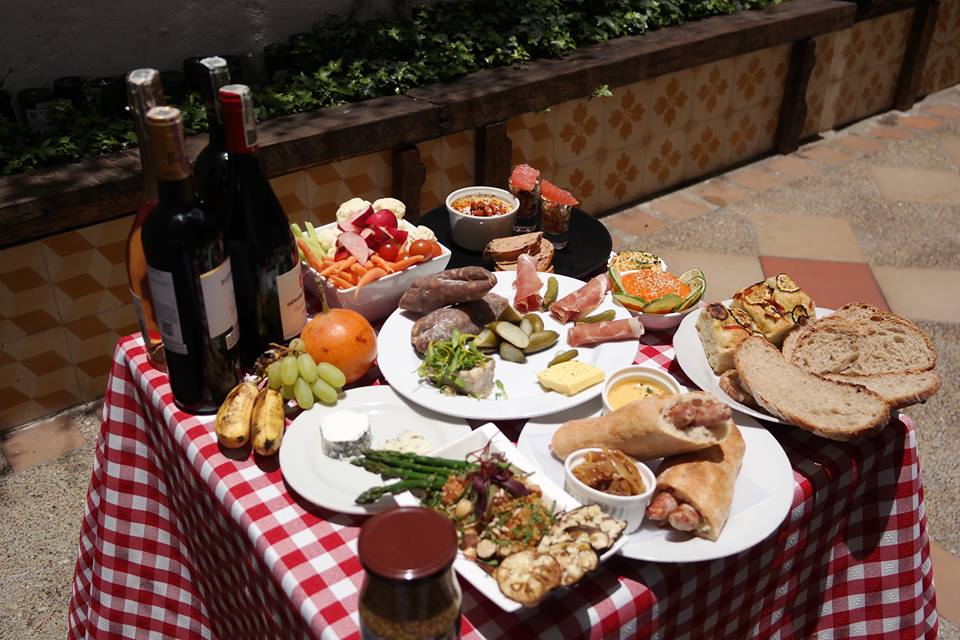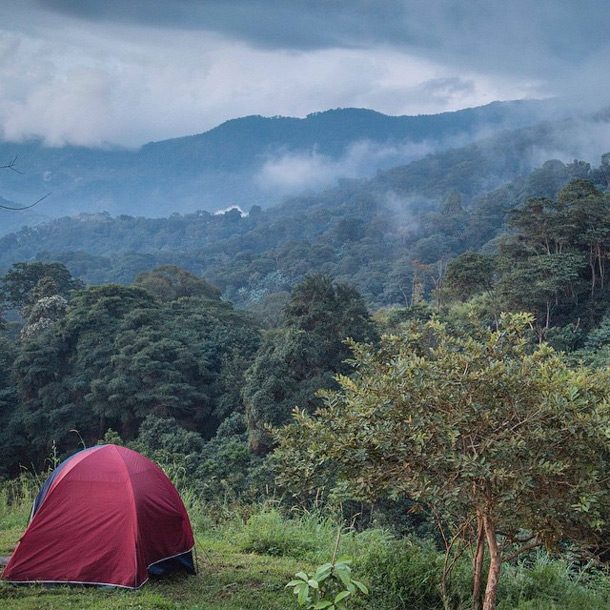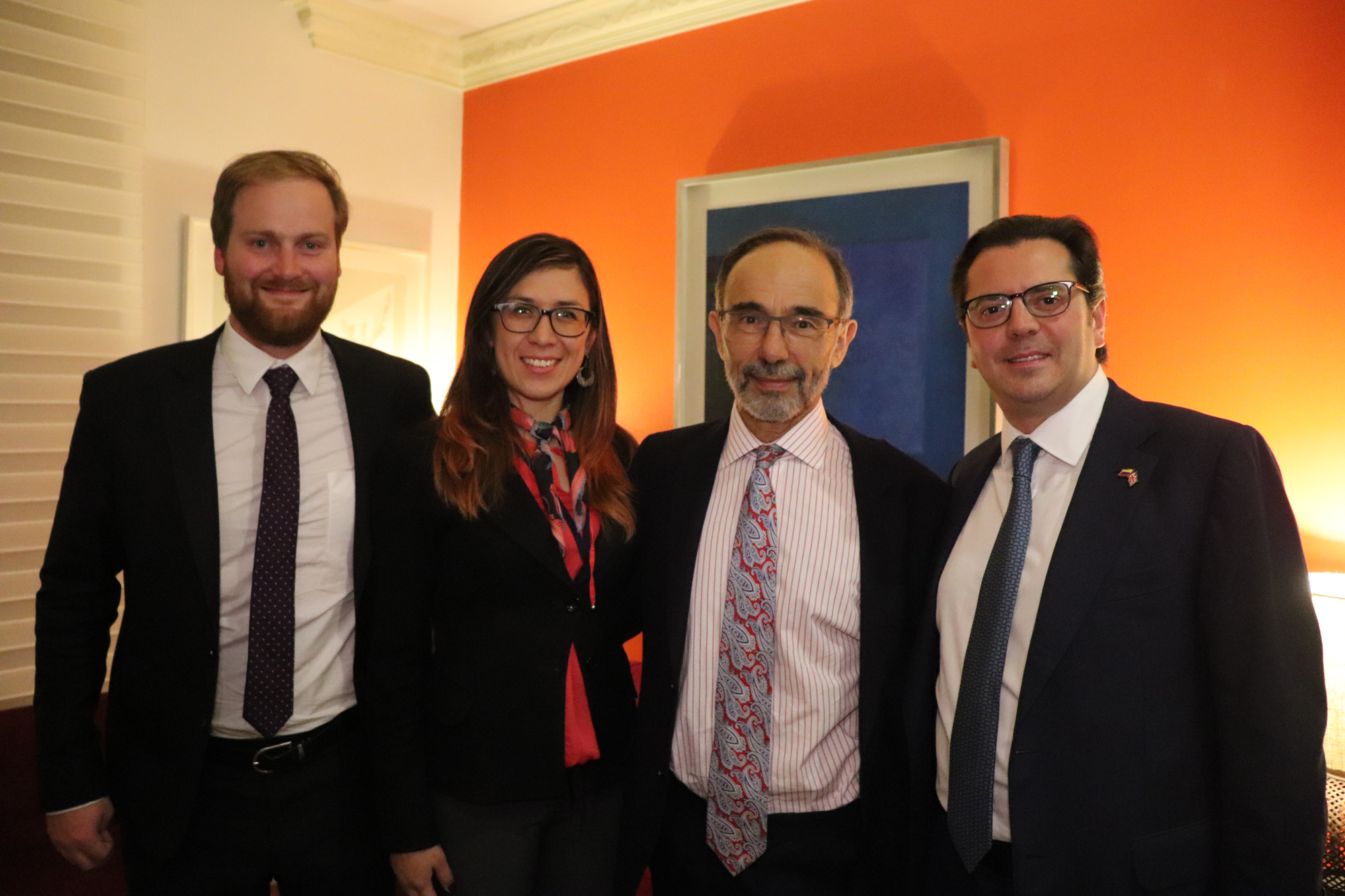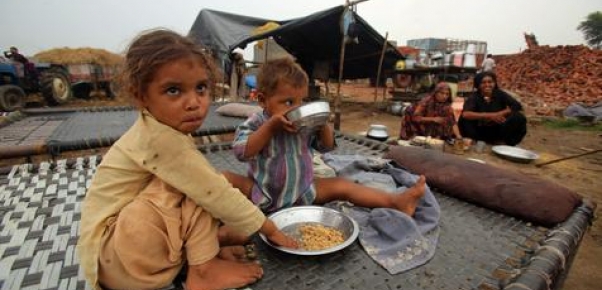How this peaceful protest method originated and how bogotanos are making it their own.
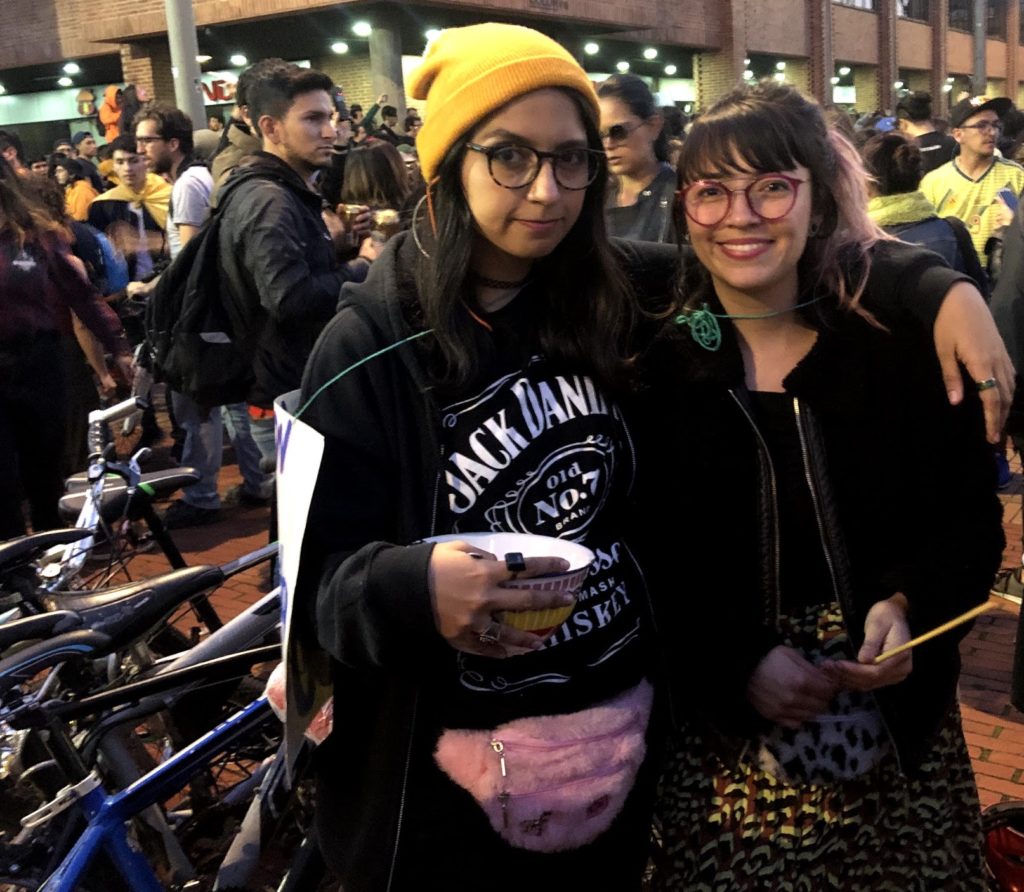
Natalia Gordillo and Katherin Martinez attended the protest concert, “Toquerolazo de Queda” on Sunday to express their support of the protests.
If you’re one of the many protesters that has been out five nights in a row banging on a pot or pan for hours on end, you might be wondering – who had this idea in the first place?
When asked, several city residents attributed the origins of the cacerolazo to 20th century protests in Chile and Venezuela. It turns out that the history of this radical, nonviolent form of protest can be traced much further back all the way to 19th century France.
France
The July Monarchy, which took hold of France from 1830 and 1848, was very controversial, especially for the Republicans who opposed it. Republicans started banging on pots and pans in front of government buildings to jeer at July Monarchy public servants. France took up the cacerolazo or la casserolade again just two years ago, when many took to the streets of Paris to protest President Emmanuel Macron’s planned labor reforms.
Chile
In the early 1970s, the peaceful protest method somehow made its way across the Atlantic, over the Andes all the way to Salvador Allende’s Chile, where upper-middle class women started banging on kitchenware to protest the socialist government. Specifically, they were expressing their discontent with the food shortages the country was experiencing after US-imposed economic sanctions. In 1971, anti-socialist women filled the streets of Santiago in a march that came to be known as La marcha de las cacerolas vacías, or the march of the empty pots. This seems to be the first time the cacerolazo took on its obvious symbolism: making noise with kitchenware was an expression of hunger and frustration with food shortages.
Following Allende’s demise and Pinochet’s rise, Chile took on the cacerolazo again in 1983, when labour groups protested Pinochet’s dictatorship by banging on pots and pans from the safety of their homes, under the cover of night.
Argentina
In 2001, well-to-do Argentinians took to the streets of Buenos Aires to express their frustrations with the country’s economic collapse when the Argentine peso’s extreme devaluation caused many to lose their life savings.
Quebec
Student casserolades broke out in May 2012 in Montreal, after the provincial government introduced Bill 78, a bill that would place strict restrictions on the right to protest. This was in response to increasing student protests regarding ever-increasing university tuition fees. The human rights commission eventually issued a fierce condemnation of the bill and after a government change in September, the controversial bill was repealed.
Catalonia
In 2017, when Catalonians were getting ready to vote on their referendum on independence, 15-minute long cacerolazos broke out nightly in Barcelona. Catalonians who were expressing their support for independence were influenced by the many Argentinian immigrants living in Barcelona who had lived through the cacerolazos of 2001.
Venezuela
In Venezuela, the cacerolazo can be traced back to the late 1980s and early 1990s when citizens protested the economic reforms of then-President Carlos Andrés Pérez. Disapproval of President Pérez culminated in the Cacerolazo of 1992, when a large contingent of working-class Caraceños filled the streets with the defiant sounds of pot-banging and horns.

On its last legs, this pan has felt the pangs of social unrest for four consecutive nights.
More recently, the Venezuelan cacerolazo evolved into a less public form of protest. Discontented Venezuelans banged on pots and pans from their homes and from out of their windows, without necessarily gathering en masse in the streets. Cacerolazos became an almost commonplace occurrence throughout Hugo Chavez’s entire administration, including an exceptional demonstration in 2012, when Chavez mocked the movement by getting out of his car and dancing to the rhythm of the banging. Citizens have expressed their disapproval of President Nicolás Maduro and their desperation in the face of Venezuela’s situation with cacerolazos as well, most recently with one in January of this year.
Colombia
Since the night of November 21, Colombia has been making its own mark in the history of this revolutionary form of peaceful protest. To date, protesters have made themselves heard for five consecutive nights of cacerolazos in the capital and around the country. Though most protesters, often students and young people, are steadfast in their commitment to continued nightly cacerolazos, other residents have expressed their discontent – they just want to get a good night’s sleep. Beyond the controversy, one thing is clear: Colombia is making noise and the world is listening.
On Sunday, calls for a cacerolazo Latinoamericano next Sunday, December 1, started circulating. The flyer for the event calls on all of Latin America to protest peacefully and in unison, “Because we are calling for real policy for the progress and dignity of all Latin American people.”
In their own words: Young bogotanos tell why they are participating in the cacerolazo and what the movement means to them
Sebastián Rojas, English teacher
What does the cacerolazo mean to you?
“For me, the cacerolazo is a movement… all of the proposals that the President had during his campaign haven’t been accomplished and well you know, the government has been influenced by the extreme right, and so people are tired of it.”
Why are you protesting?
“We’re trying to show that we have a voice. We want to do something. We have a voice and we’re trying to show that we’re not just objects that can be manipulated by the government.”
“The cacerolazo is just a call. People bring out whatever they can to make noise. If voices are not enough, than noise can be something that the government might listen to.”
What would you say to residents who are complaining about the continued noise and the disruption to their daily lives?
“I would have to say that they have to stand it. I would say that the majority of the Bogotá
population is very involved in it.”
Natalia Gordillo, Ilustrator
What does the cacerolazo mean to you?
“It’s a subversive, non-aggressive way to show that there’s something wrong with your country. It’s a way of making noise without resorting to violent methods.”
Why are you protesting?
“The first is for the assassination of social leaders and the second is because young people aren’t going to have job security, especially if we don’t have access to a pension, even less if they start paying us hourly.”
What would you say to residents who are complaining about the continued noise and the disruption to their daily lives?
“Don’t let privilege cancel out your empathy.”
Silvia Bastidas, Textile designer
What does the cacerolazo mean to you?
“I feel that we’re using pots and pans as a revolutionary act. That it comes from the tradition of expressing hunger, that there’s no food, but that in this moment, we’re just doing it to be heard – to make noise and to protest. The day of the curfew, I found it delightful to see how we all left our homes to make ourselves heard. Neighbours all went out from their balconies, because it’s necessary that they hear us.”
Why are you protesting?
“The president can’t be indifferent to this call. We’re marching for a lot of things: the environment, food prices, pensions, labour, student unions – we can’t continue to be mistreated. I also feel that he should at least sit down with one person from each labour union that is marching. Not just make plans to meet with businessmen, who aren’t the ones who need change.”
What would you say to residents who are complaining about the continued noise and the disruption to their daily lives?
“If they don’t like it, well it’s up to them to stay home in agreement with all of the bad things that are happening. But they should respect us and try to understand all that we’re trying to do. This isn’t just about art or to make noise, but also about so many other things that also concerns and affects them, in so many ways.”
“You can’t do anything else but support or open your eyes. That’s why I invite them to fight. If not now, than on the first of December, when there will be a Latin American cacerolazo. We’re all going to get together for a cacerolazo that is heard around the world.”

